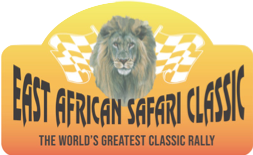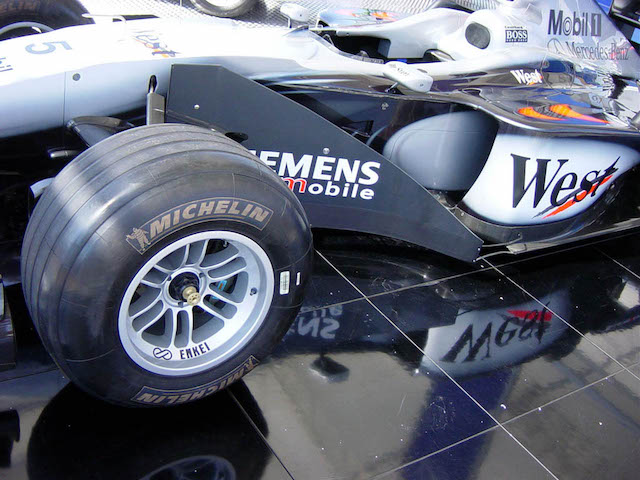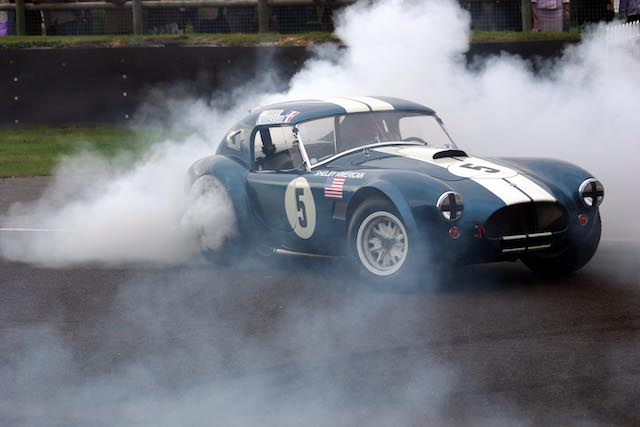Nas Car Race And East African Safari Rally
NASCAR race and the East African Safari Rally both embody the excitement and challenge of motorsport. Though vastly different in setting and format, they share several key aspects that make them thrilling and unique. Both events attract global attention and push drivers and vehicles to their limits. They highlight the blend of speed, endurance, and strategy, making them some of the most admired competitions in the motorsport world.
The thrill of competition in NAS CAR Race and rally racing
In a NAS CAR race, drivers compete in fast-paced, high-speed conditions on oval tracks. The competition is intense, with drivers often jockeying for position at breakneck speeds. Likewise, in the East African Safari Rally, participants battle through grueling terrains, testing both their skill and endurance. Though the environments differ drastically, the sense of competition in both races remains a constant.
Both events see drivers pushing their vehicles to the limit. NASCAR racers navigate tight corners at speeds exceeding 200 mph, while rally drivers tackle rugged roads and treacherous weather conditions across East Africa. In both competitions, success requires not only speed but also adaptability, strategic thinking, and a deep understanding of the vehicle’s performance.
Vehicle endurance in NASCAR race and rally competitions
Endurance plays a vital part in both the NASCAR race and the East African Safari Rally. NASCAR vehicles must withstand high speeds and continuous laps without losing performance. Drivers must be conscious of tire wear, fuel levels, and engine efficiency. Similarly, rally cars in the East African Safari Rally face extreme conditions. These vehicles are required to endure long distances, often spanning days, while navigating through rough terrains like gravel roads, forests, and mountains.
In both cases, the cars’ ability to maintain peak performance is critical. In NASCAR, teams rely on their cars’ aerodynamics and engine power, while rally teams focus on durability and off-road capabilities. Despite the different environments, both NASCAR and rally cars must be equipped to handle extended periods of intense action.
The role of speed
Speed is a defining element in both NASCAR races and the East African Safari Rally. NASCAR focuses on reaching the highest speeds possible on smooth oval tracks. The faster the car goes, the better the chances of winning. In the East African Safari Rally, however, speed is measured differently. Rally drivers must adjust their pace according to the terrain, weather, and road conditions. Fast decisions can make a huge difference, but maintaining control and preserving the car is equally crucial.
Despite the different approaches to speed, both NASCAR and rally racing require skillful handling at high velocities. In NASCAR, drivers are tested on their ability to navigate tight corners and overtake competitors at high speeds. In rally racing, drivers must make quick decisions about when to accelerate and when to slow down to avoid damaging the car.
Strategy
Both NASCAR race and the East African Safari rally demand strategic thinking and quick decision-making. In NASCAR, teams must constantly adapt to track conditions, pit stops, tire wear, and fuel consumption. The strategy evolves throughout the race, and teams must stay ahead of their competitors while managing these aspects efficiently.
In rally racing, especially in the East African Safari Rally, strategy also plays a huge role. Drivers need to plan their speed, tire usage, and pit stops while adjusting to ever-changing road conditions. The unpredictability of weather, terrain, and vehicle wear during the rally means that rally teams must think several stages ahead, making real-time decisions that can have long-lasting effects on their race.
Though the nature of the strategy differs, both sports rely heavily on the driver’s and team’s ability to adjust to the environment and manage the vehicle throughout the competition.
Teamwork in both events
Teamwork is a cornerstone in both NASCAR races and rally competitions. NASCAR teams consist of mechanics, engineers, and strategists working together to ensure the car’s optimal performance. From adjusting the car setup before the race to executing efficient pit stops, a well-coordinated team is essential for success.
In the East African Safari Rally, teamwork also plays a vital role. Although rally drivers work alone in the car, the support crew is equally crucial. Rally teams must handle mechanical repairs, provide navigation assistance, and ensure that the vehicle remains in good condition throughout the race. Despite the differences in race format, both NASCAR and rally events emphasize the need for a cohesive, well-prepared team.
Challenge of unpredictability
Both NASCAR race and rally racing come with a level of unpredictability. In NASCAR, the race can take unexpected turns due to accidents, weather conditions, or strategy changes. Similarly, in the East African Safari Rally, weather conditions and the road surface can change dramatically, making every stage a new challenge. Drivers must stay alert and adapt to these changes quickly, as each element can impact their performance. This unpredictability adds to the thrill and excitement of both types of motorsport.
Role of speed and precision in handling
In both NASCAR race and rally racing, speed and precision go hand-in-hand. NASCAR drivers must maneuver their cars with precision at high speeds while avoiding collisions and maintaining track position. The precision required to navigate sharp corners and high-speed straights without losing control is a testament to the drivers’ skill.
Similarly, rally drivers in the East African Safari Rally must navigate through rugged landscapes and unpredictable paths. The precision of their driving determines how well they maintain control of the car on challenging surfaces like mud, gravel, and sand. While the speed might differ, the need for precision handling remains a consistent factor in both sports.
Vehicle technology
Vehicle technology plays an essential part in both NASCAR race and rally racing. In NASCAR, cars are built for aerodynamics, speed, and precision handling. The technology focuses on maximizing speed on smooth tracks while ensuring driver safety. Engineers use advanced data analysis and design features to maintain performance throughout the race.
In rally racing, vehicles are built for durability and off-road capabilities. They are equipped with heavy-duty suspensions, reinforced chassis, and tires designed to handle the rough terrains of the rally. While the design may be different, both NASCAR and rally vehicles are equipped with cutting-edge technology to optimise performance and safety.
Global fanbase of NASCAR and rally racing
Both NASCAR and the East African Safari Rally boast a passionate fanbase. NASCAR, with its long history and American roots, attracts millions of viewers at each race. Fans from all over the world tune in to watch the high-speed action and follow the race season. The sense of excitement and competition is palpable as fans cheer on their favorite drivers.
Similarly, the East African Safari Rally has an international following. The event’s history, rugged terrain, and unique format attract rally enthusiasts from around the globe. Fans travel to East Africa to witness the drama and challenges of the rally firsthand. Though the fan experiences may differ, both sports create a strong connection with their audiences.
Legacy and evolution of both sports
Both NASCAR race and the East African Safari Rally have rich histories that have shaped modern motorsport. NASCAR’s roots in stock car racing date back to the 1940s, and the sport has grown into a global powerhouse. The East African Safari Rally, with its inception in the 1950s, has become a prestigious rally event known for its grueling stages and demanding conditions.
As both sports evolve, they continue to attract new generations of fans and competitors. NASCAR has embraced new technology, such as hybrid engines, while the East African Safari Rally has seen a rise in classic car participation. Both sports maintain their legacies while adapting to modern changes in the racing world.
High-intensity moments
Both NASCAR race and the East African Safari Rally feature high-intensity moments that captivate viewers. NASCAR races are filled with edge-of-your-seat moments, including close overtakes, dramatic crashes, and fast-paced finishes. Similarly, rally racing is known for its high-risk moments as drivers navigate through treacherous roads and tricky weather conditions.
Both types of racing keep fans on the edge of their seats. The intensity of each moment builds excitement and adds to the thrill of the race, drawing viewers back for every event.
Motorsport at its peak
Both NASCAR race and the East African Safari rally represent the peak of motorsport in their respective categories. NASCAR embodies the speed and excitement of track racing, while the East African Safari Rally showcases the challenges of off-road racing. Each event highlights the skill, strategy, and endurance needed to succeed in motorsport.
While NASCAR focuses on speed and precision on a smooth track, rally racing emphasizes resilience and adaptability on rugged terrains. However, both require the same fundamental traits of excellent driving, car handling, and teamwork.
Speed, endurance, and legacy
Though NASCAR race and the East African Safari rally differ in many aspects, both share a deep connection to motorsport history. These events bring together the thrill of speed, the challenge of endurance, and the passion of global fans. While NASCAR races on fast, smooth tracks, the East African Safari Rally challenges drivers with unpredictable terrains and tough conditions.
Both events celebrate the resilience of the human spirit and the pursuit of excellence in racing. Whether on a high-speed oval track or across rugged African landscapes, both NASCAR and rally racing showcase the exciting, unpredictable world of motorsport.
Expose your brand at the East African Safari Classic Rally05 – 13 December 2025
|






